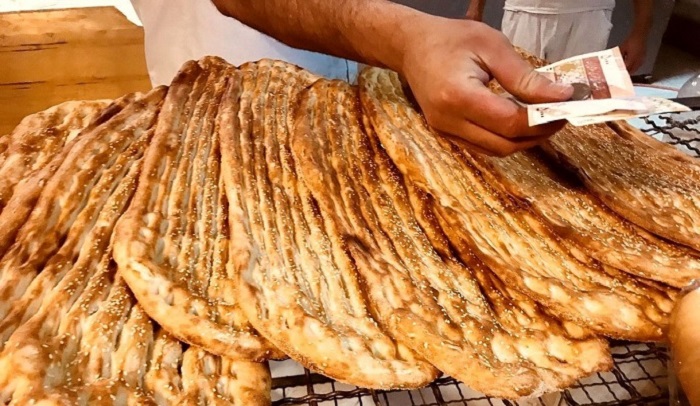
Iran is currently battling a severe bread crisis. Despite government measures aiming to stabilize bread prices, inflation continues to rise, severely impacting the costs of many food items.
As a result, bread consumption has intensified since it’s now seen as an affordable staple for many Iranian families in comparison to other commodities.
Over the past decade, the nation’s bread consumption patterns have witnessed a noticeable change. As per the Statistical Center of Iran, Iranian households consumed approximately 150 kilograms of bread annually in 2011. This figure grew to 161 kilograms in 2022.
This shift in consumption behavior was accompanied by a notable price hike. The average annual cost of bread for families rose from 500,000 tomans in 2015 to a substantial 2.2 million tomans by 2022.The biting food inflation has been especially hard on the lower echelons of society.
For those in the bottom three deciles, bread forms 29% of their diet, in stark contrast to meat’s meager 16%. Compared to other nations, Iranians are consuming bread at a rate two to three times higher. This dependence poses a potential threat of hunger among the more vulnerable populations if bread prices were to surge further.

Iranians are consuming bread at a rate two to three times higher. This dependence poses a potential threat of hunger among the more vulnerable populations if bread prices were to surge further.
Acknowledging the pressing nature of this crisis, the Iranian government earmarked an extensive 104 trillion tomans in their 2022 budget specifically for bread subsidies. This fund is intended to assist wheat farmers and bakeries alike. Alongside this, a bread smart card system has been rolled out in select provinces to regulate flour consumption and to ensure bakers receive their subsidies. However, raising bread prices has been cautioned against by experts to prevent a dire humanitarian emergency.
As the debate surrounding bread subsidies rages on, removal of the same seems unlikely due to potential socio-economic repercussions. Masoud Daneshmand, an economist and former Secretary General of Iran’s Economy House, highlights the urgency of finding an alternative solution before considering subsidy cuts.
The introduction of the bread smart card system hasn’t been without its issues either. The system, although meant to keep an eye on flour consumption, faced resistance from bakers who claim discrepancies in their recorded sales. Additionally, concerns are brewing over the quality of government-provided bread. While some citizens favor state-owned bakeries, a significant portion remains disappointed with the government’s offerings.
Further intensifying the situation, the price of various bread types in Mashhad has recently shot up by 40%. The Fars News Agency reported this alarming increase on July 25, emphasizing a trend that began earlier in May. For instance, the cost of Sangak bread online soared, with pieces being sold for as much as 35,000 tomans.
The gravity of the situation was underscored by the state-run ‘Tjarat News’ headline on May 3, 2023: “Bread Sold at 35,000 Tomans!” In essence, Iran’s bread situation remains a multifaceted challenge, with implications stretching from economic strategies to the wellbeing of its citizens.
MEK Iran (follow us on Twitter and Facebook), Maryam Rajavi’s on her site, Twitter & Facebook, NCRI (Twitter & Facebook), and People’s Mojahedin Organization of Iran – MEK IRAN – YouTu

